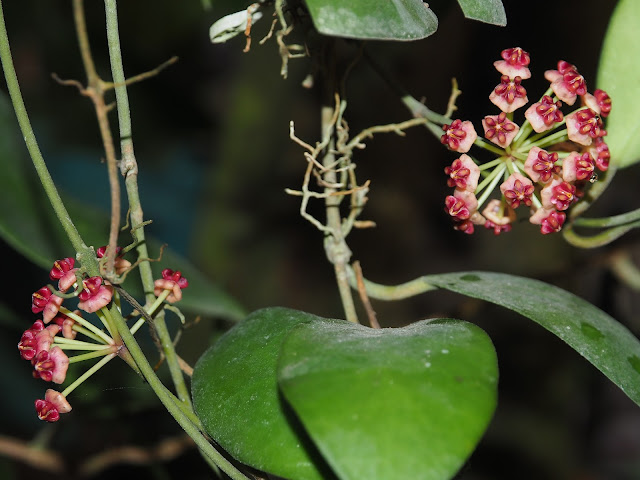We are at the height of our Dry Season, it is actually not dry but hot and humid. The temperature together with the relative humidity gives a distinct feeling of heat measured as Heat Index. In the city where i live the temperature today is 36°C and 37°C for the weekend. Those temperatures alone are so difficult to humans and HI gets to 41-42°C! We in the offices are a bit privileged as we have airconditioning units, and i don't leave for home until past 6 for the temperature at home to be milder.
I aborted my plan of going home last weekend for my plants. The conditions in going home will be very difficult, i decided not to risk my health now, as i have not been fully free from the allergic cough i got since last week. I actually had it when i joined the butterfly group in trekking and photographing butterflies, in 3 separate places! I am thankful that my resistance is not really very low, that i was able to go without aggravating my health condition.
I missed photographing my hippeastrum, my hoyas in bloom and other plants i know are blooming. Am glad my sister sent me even just phone shots of the hoyas currently blooming. Others i fully didn't see, but i know these plants are now showing their colors. Most of these i took the first week of May.
Hippeastrum puniceum, after the first typhoon which brought heavy rains in April
above is just a clump, and we had more hedges which are just starting
a clump in the hedges that i wasn't privilege to see blooming
again another portion of the hedges with emerging scapes
More hippeastrum hedge, with late scape emergence. At the right is a bush of
Ixora bracteata
a nice double umbel of Ixora bracteata
Hoya pubicorolla ssp. anthracina still doesn't stop blooming, it has been blooming since February
Hoya carnosa red gives lovely dainty umbels
as usual, H pubicalyx never stops, it is one of the bigger umbels among the hoyas
another form of Hoya pubicalyx with green rounded leaves, but a bit hesitant in flowering
Hoya meliflua has one of the long lasting flowers, nectar ooze much brightening the color of the corolla. When it rains the color pales without the nectar.
 Hoya obscura
Hoya obscura, one of the nicest scents among my collection.
Hoya merrillii, also lovely and diligent to flower, but doesn't give organized umbels
One of my favorite scents with citrusy smell, Hoya crassicaulis, the golf ball hoya
Hoya multiflora is not viny but erect bush, also very frolific in flowering, with many nodes sometimes all giving umbels.
Left is Hoya lacunosa, another sweet scented hoya. At the right is Hoya valmayoriana which managed to climb the lanzones tree. It escaped my watching eyes.

The above two are sent by my sister from a cellfone shot. Left is Hoya meliflua, which started flowering for the first time in her care; at the right is the first flowering of Hoya elmeri, formerly Hoya mindorensis superba. It has a big very rounded umbel.
As i said at the outset, i failed to photograph all the other flowering plants in the garden as i failed to go home last weekend. These are just handy because they are the first priority to photograph when i am home. They are also a little bit pampered, unlike the rest of the gang, which are mostly left on their own.
































